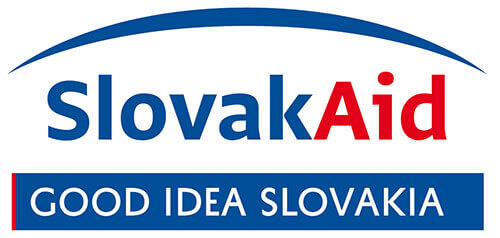Lukashenko constantly boasts that he did not allow the privatization of businesses and maintained the industry and collective farms remaining in Belarus after the collapse of the USSR. After 27 years of running the country, one can assess the results of such an economic policy… It is a failure.
The privatization of state-owned businesses is indeed suspended in Belarus. For example, for 9 months of 2021, the cost of state-owned shares that were sold to foreign investors amounted to only $194,000. Essentially, the last large privatization deal was concluded in 2011, when the authorities in Belarus sold the remaining 50% of Beltransgaz shares to Gazprom (for $2.5 billion). Since then, the authorities have rarely moved to the sale of state property to either foreign or Belarusian investors, and what sales there were mainly concerned small businesses.
The largest government sector in Europe
The public sector includes state-owned manufacturing enterprises and state organizations that create services such as public administration, health care, education, and defense.
According to the IMF, the public sector forms up to 50% of employment and added value in the economy. Also, according to Minister of Economy Alexander Chervyakov, the public sector creates less than 50% of gross value added and half of employment. The role of the public sector in the economy of Belarus is the largest of all European countries.
Further we will focus exclusively on the sector of state-owned businesses. As of January 1, 2021, there were 3,169 only medium and large state-owned enterprises with a state share in authorized capital. That is, less than half of all medium and large enterprises. For simplicity’s sake we will call them «medium and large SOEs,» though this is not the best definition of the SOE sector.
Small state businesses without departmental subordination and micro-businesses are not considered. In accordance with Belarusian methodology, the size of an enterprise is determined by the number of employees hired. Medium-sized enterprises employ from 101 to 250 employees, and large ones have more than 250 employees. The Belarusian Potash Company then, which employs fewer than 100 people, but which is the main exporter of potash products produced by Belaruskali, is most likely not included in the list of medium and large state-owned enterprises.
However, businesses in which the state may have a small share in authorized capital, but which does not allow control over their activities, are considered. For example, the State Property Committee owns 6.31% of Priorbank’s shares, and this bank will be included in the number of medium and large state-owned enterprises. There are, however, not so many of these kinds of businesses on the list, as there are only 300 businesses with a state share of less than 50%.
Most medium and large state-owned enterprises were in agriculture, forestry and fisheries (1,017); industry (726); and construction (320). The remaining 1,106 enterprises – 35% of the total – are in the service sector.
In 2020, medium and large state-owned businesses employed an average of 1,239 thousand people, or 28.7% of all employed people in the economy. Their salaries were almost 6% less than the economy’s average. They exported $9.8 billion worth of goods and $1.9 billion worth of services – 34% and 22% of all exports of goods and services, respectively. Still, according to the Minister of Economy, the public sector forms up to 53% of the export of goods, which once again confirms that data on medium and large state-owned enterprises underestimate rather than overestimate the role of the public sector in the economy.
Efficiency of government-owned businesses is at an all-time low
It is no secret that the state is a less effective owner than a private owner. There is much evidence of this in Belarus.
First, according to IMF estimates, in 2016 the difference in efficiency between public and private businesses in Belarus, measured by income per employee, was 40%.
Second, medium and large state-owned enterprises were responsible for 77.6% of overdue credit and loans as of January 1, 2021.
Third, in 2020, medium and large state-owned enterprises worked with a net profit of 242 million BYN. (about $100 million), which totaled only 4% of the profits of all medium and large enterprises. This is also three times less than Gazprom Transgaz Belarus, which earned 754 million BYN in net profit over the same period (over $300 million). That is, even state-owned enterprises of other countries work in Belarus more successfully than Belarusian state-owned enterprises. The eighth bank in Belarus in terms of assets, the private Alfa-Bank, earned a net profit only slightly less than all medium and large state-owned enterprises combined (200 million BYN).
Of course, it is not entirely accurate to compare individual profitable businesses to the whole sector of state-owned businesses, since among the state businesses there are some that are very profitable (for example, Belaruskali or Belarusbank). But the trouble with the Belarusian public sector is that many state-owned enterprises are chronically inefficient, and their losses are covered by more successful state-owned enterprises through cross-subsidization or the state budget. In the private sector, it is impossible to be unprofitable from year to year and continue to operate. The result of such an economic policy is that one medium and large state-owned enterprise (out of 3,169) in 2020 earned an average of $31,400 in net profit, or only $80 per employee.
This is indicative of the very low efficiency of state-owned enterprises. This profit is not enough to cover the investments made in businesses, including those for modernization. As a result, we have BMZ saved from bankruptcy due to the issue of bonds of the Ministry of Finance in the beginning of 2021 for over $600 million, as well as continual state support for woodworking, cement, sugar, textile, and other state-owned factories. This is at least hundreds of millions of dollars annually.
Gradual degradation of government-owned businesses
Restraining structural reforms, including the restructuring and privatization of state-owned enterprises, has its economic and social consequences. The propaganda in Belarus frightens people with reforms inevitably leading to the elimination of state-owned businesses and an increase in unemployment. But that’s a lie! On the contrary, without structural reforms, the public sector will gradually break down. You can even observe this with examples of industrial flagship businesses:
- In 2019, 5,684 people worked at Mogilevkhimvolokno – 49% less than in 2008
- In 2020, 13,759 people worked at MAZ – 42% less than in 2010
- In 2020, 8,967 people worked at Belshina –36% less than in 2008
How many state-owned businesses were liquidated during this time? Some of them can be mentioned: Vitebsk’s Classics of the Fashion Industry (founded in 1931), Kozhevnik (founded in 1930) in Mogilev, the Brest Modul factory (founded in 1944), Minsk Bakery No. 1 (founded in 1927), Gomel automobile repair plant ARZ (founded in 1939), and Novopolotsk’s factory for protein-vitamin concentrates (founded in 1978).
Even without privatization, the share of the public sector in the economy is gradually decreasing. From 2012 to 2020, the average number of employees at medium and large state-owned enterprises decreased by 477,000 (-28%). Over the same period, the number of employees at private enterprises increased by 220,000 (+ 13%) – up to 1.96 million people.
Even without any sale of SOEs, the share of SOEs in the economy will continue to gradually decline. Refusing to privatize does not solve the problems of state-owned enterprises, but only postpones for a while making decisions that are important for the economy as a whole and for specific businesses and their employees specifically.
The article was prepared by a participant of the SlovakAid scholarship program.

Материал доступен на русском языке: Как выживает госсектор в Беларуси в отсутствии приватизации











